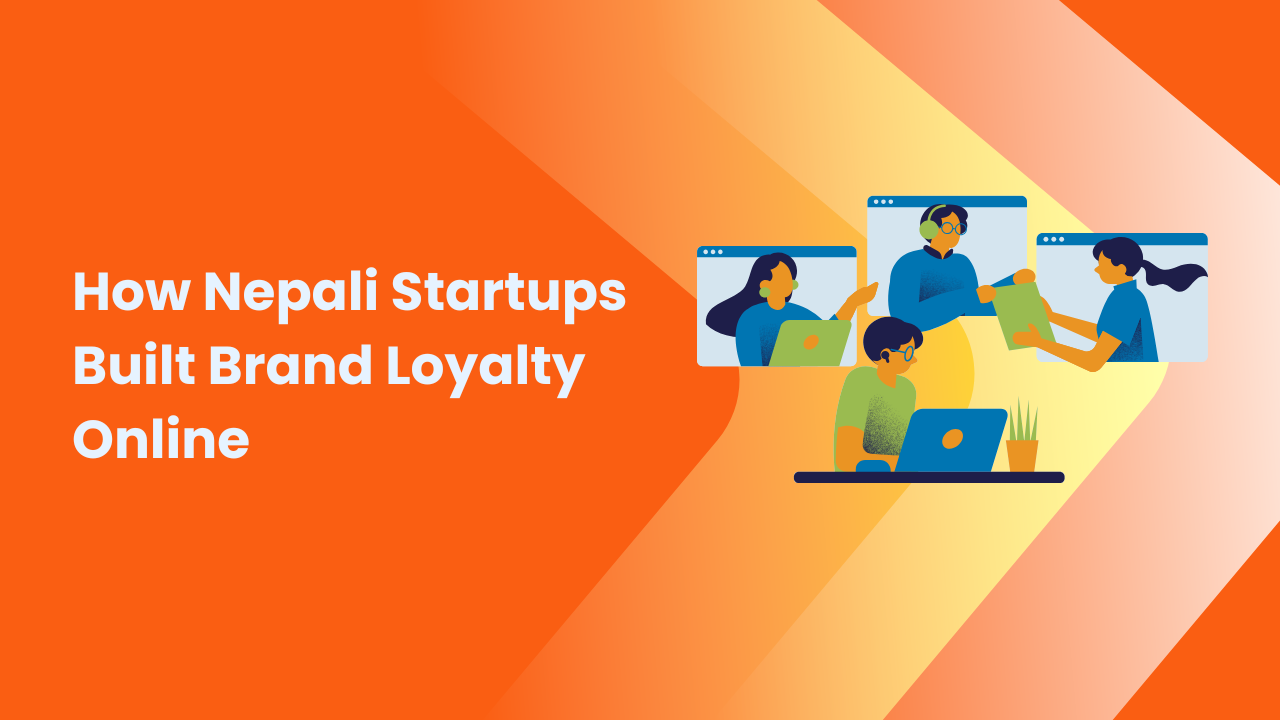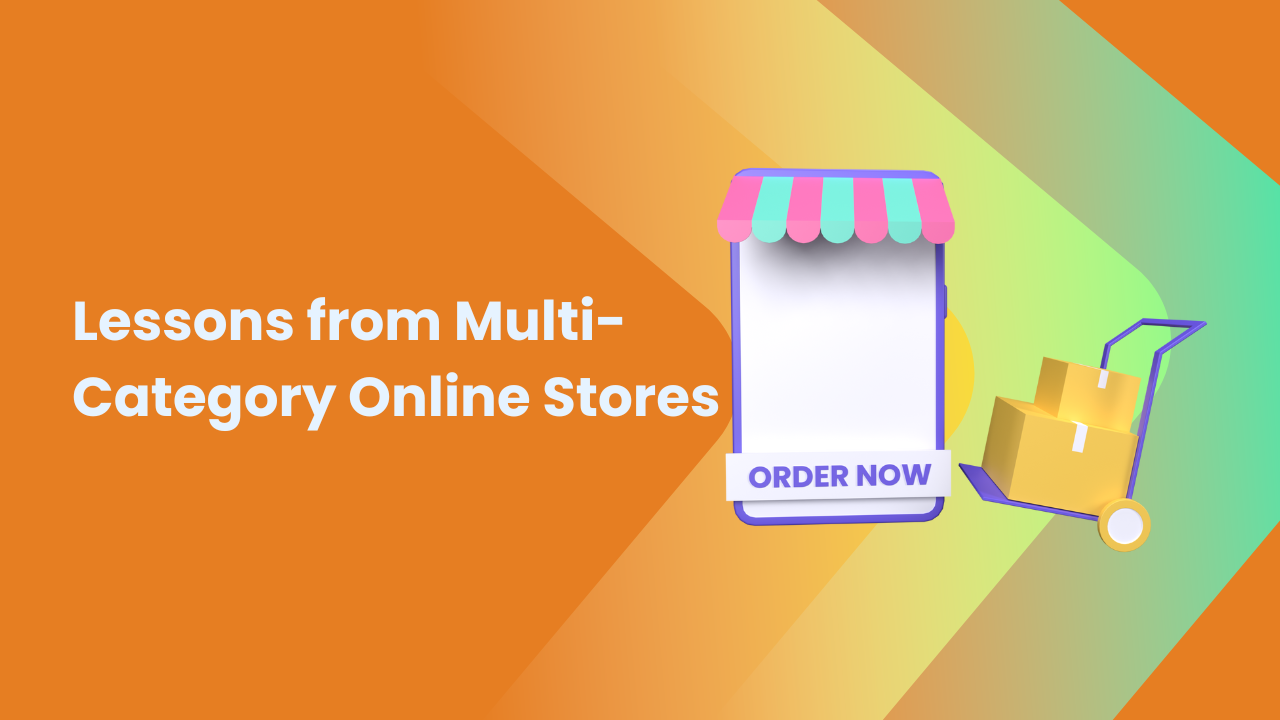Share this Article
User experience (UX) has emerged as a critical factor in the success of any online business, particularly for e-commerce stores. In Nepal, where the online shopping landscape is expanding rapidly, providing a seamless, enjoyable shopping experience has become essential. With increasing competition and the evolving digital marketplace, customers expect a high-quality, intuitive experience that encourages them to browse longer, make purchases, and return for repeat business.
A well-designed, easy-to-navigate website that caters to the needs of your customers can lead to better conversion rates, higher customer satisfaction, and a growing loyal customer base. In 2025, as e-commerce in Nepal continues to grow, improving UX will be more important than ever.
In this article, we will explore strategies for optimizing the user experience on your online store, ensuring your customers have a smooth, enjoyable shopping journey that keeps them coming back. These strategies will also help you stay competitive in Nepal’s ever-expanding e-commerce sector.
Why User Experience Is Crucial for E-commerce Success
User experience in e-commerce refers to the overall journey that a customer goes through when interacting with your website, from the moment they land on the homepage to when they complete a purchase. It includes everything from the design, navigation, and site performance to how easy it is for customers to find products, complete transactions, and access customer support.
Here are some reasons why UX matters so much for your online store:
- Conversion Rates: A smooth, user-friendly website increases the likelihood that a visitor will make a purchase, turning site traffic into paying customers.
- Customer Retention: When customers have a pleasant experience, they are more likely to return to your store in the future, resulting in higher customer retention rates.
- Competitive Advantage: In a market like Nepal’s, where e-commerce competition is fierce, offering a great user experience can set you apart from other businesses and help you attract more customers.
- Reduced Bounce Rates: When customers find it easy to navigate your site, they are less likely to leave without making a purchase. A positive user experience lowers bounce rates and encourages visitors to stay on your site longer.
Given the importance of UX, let’s look at the strategies you can implement to improve the user experience on your e-commerce store in Nepal.
1. Optimize Your Website Design for Simplicity and Clarity
The first thing visitors notice when they land on your website is its design. A cluttered or overly complex design can overwhelm customers and cause them to leave your site before they even start browsing. In contrast, a clean, simple design with clear navigation options can make the shopping experience much more enjoyable.
In Nepal, where many first-time online shoppers may not be very familiar with e-commerce, simplicity and clarity are even more important. To make your store easy to use, consider the following:
- Simple Navigation: Make sure your site’s main menu is clear and easy to understand. Group your products into logical categories and subcategories, and add a search bar at the top for easy product discovery.
- Consistent Layout: Keep the layout consistent across all pages of your site. This means that your navigation bar, footer, and other common elements should be in the same position on every page.
- Whitespace: Effective use of whitespace helps make the content more digestible and prevents your site from feeling cluttered. Avoid overcrowding your pages with too many elements or unnecessary information.
- Accessible Typography: Use legible fonts with appropriate sizes and colors. Poor typography can make it difficult for customers to read product details or navigate the site, leading to frustration and abandonment.
By focusing on simplicity and clarity, you make it easier for visitors to explore your site and find what they’re looking for, improving their overall experience.
2. Mobile Optimization is a Must
In Nepal, a large number of people access the internet through their smartphones. As mobile traffic continues to rise, optimizing your online store for mobile devices is essential to meeting customer expectations. A mobile-friendly design will ensure that your website performs well on all screen sizes, from smartphones to tablets.
- Responsive Design: Ensure your website automatically adjusts its layout and content based on the size of the user’s screen. This will create a consistent and pleasant experience for visitors across all devices.
- Mobile-First Approach: Given the prevalence of mobile shopping in Nepal, it’s a good idea to design your website with mobile users in mind first. Focus on creating a streamlined, fast-loading mobile version of your site.
- Fast Loading Speed: Mobile users typically expect websites to load quickly. Slow loading times can lead to frustration and high bounce rates. To optimize site speed on mobile, compress images, use fewer graphics, and reduce unnecessary features that might slow down the user experience.
Since the majority of online shoppers in Nepal are likely to visit your store from mobile devices, ensuring your website is optimized for mobile will significantly improve UX and increase conversions.
3. Improve Website Performance and Speed
Website performance is another crucial aspect of user experience. Slow-loading websites not only frustrate customers but also negatively impact your store’s SEO rankings, leading to fewer visitors. In Nepal, where internet speeds can vary, optimizing your website’s performance is critical to ensuring that customers can shop without interruptions.
- Optimize Images: Large images can slow down your website, especially on mobile devices. Compress images to reduce their file sizes without compromising their quality. Use formats like WebP to further optimize image loading times.
- Leverage Browser Caching: Caching allows a user’s browser to store certain parts of your website so that they don’t need to be reloaded every time a customer visits. This speeds up subsequent page loads and improves performance.
- Minimize HTTP Requests: The fewer requests your website has to make (e.g., to load images, scripts, or CSS files), the faster it will load. Reduce unnecessary HTTP requests by combining files, using CSS instead of images, and eliminating redundant elements.
- Use Content Delivery Networks (CDNs): CDNs store copies of your website across multiple locations, allowing users to access the site from a server closer to them, reducing loading times.
A fast-loading website is crucial for maintaining a positive user experience, especially in Nepal, where users may be accessing your site from areas with slower internet speeds.
4. Simplify the Checkout Process
The checkout process is a key part of the customer journey, and it’s where many online stores lose potential customers. A complicated or lengthy checkout can lead to cart abandonment, which directly impacts your sales. Simplifying and streamlining the checkout process is essential to improving UX and boosting conversions.
- Guest Checkout Option: Allow customers to make a purchase without creating an account. Many first-time shoppers in Nepal may not want to sign up for an account, so offering a guest checkout option helps reduce friction.
- Multiple Payment Options: In Nepal, people prefer different payment methods. Provide a variety of payment options, including cash on delivery (COD), mobile wallets like eSewa and Khalti, and credit/debit cards. This ensures that customers can pay in a way that’s most convenient for them.
- Progress Indicators: A progress bar during the checkout process can show customers how many steps are left to complete their purchase. This helps them feel more confident that they are not committing to a lengthy process.
- Transparency in Shipping and Returns: Provide clear information on shipping costs, delivery times, and return policies during checkout. Being upfront about these details builds trust and reduces the likelihood of cart abandonment.
A simplified checkout process helps eliminate barriers to purchase, making it easier for customers to complete their transactions.
5. Use High-Quality Images and Descriptions
Since customers can’t physically touch or try your products, the quality of your product images and descriptions becomes essential to the overall shopping experience. In Nepal, where customers may be new to online shopping, clear and attractive product images and detailed descriptions can make a big difference in their purchasing decisions.
- Professional Product Images: High-resolution images that show products from multiple angles can help customers get a better sense of what they are buying. Consider including a zoom feature so users can see product details up close.
- Informative Product Descriptions: Provide detailed, accurate descriptions that highlight the key features, dimensions, and benefits of the product. In Nepal, where product knowledge might not always be available offline, clear descriptions help customers make informed purchasing decisions.
- Videos: If possible, include product videos that show the product in use. Product videos give potential buyers a better sense of how the product works and can make them feel more confident about their purchase.
Clear, high-quality visuals and thorough product information make customers feel more secure in their buying decisions and enhance the user experience.
6. Personalize the Shopping Experience
Personalization enhances the customer experience by tailoring the shopping journey to individual preferences. In Nepal, where many people may be new to online shopping, personalized experiences can help make customers feel valued and understood.
- Personalized Product Recommendations: Use browsing data and purchase history to recommend relevant products to customers. For example, if a customer buys a phone, suggest related accessories like phone cases, chargers, or headphones.
- Targeted Offers and Discounts: Send personalized offers or discounts based on a customer’s shopping history. Offering special deals on festivals or holidays like Dashain or Tihar can encourage purchases and enhance customer loyalty.
- Customer Segmentation: Divide your customer base into segments based on demographics, behavior, or preferences, and tailor your marketing efforts accordingly. For example, offer exclusive deals to loyal customers or provide special discounts to first-time buyers.
Personalization improves customer engagement, leading to increased satisfaction and loyalty.
7. Provide Excellent Customer Support
Customer support is a vital part of the e-commerce experience, and offering responsive, helpful support can improve customer satisfaction and increase trust in your store. In Nepal, where some consumers may be hesitant about buying online, providing easy access to support can help address concerns and resolve issues.
- Multiple Support Channels: Offer customer support through various channels, such as live chat, email, and phone. In Nepal, where customers may have limited access to internet services, offering phone support can be especially helpful.
- Quick Response Times: Respond promptly to customer inquiries, especially during peak shopping seasons. Quick responses show that you value your customers and are committed to addressing their needs.
- FAQ Section: Include a well-organized FAQ section that answers common questions about products, shipping, returns, and payments. This allows customers to quickly find answers without needing to contact you.
Good customer support enhances the overall user experience and helps build trust with your customers.
8. Optimize for Search Engines (SEO)
Search engine optimization (SEO) is essential for ensuring your store ranks well in search engine results, making it easier for customers to find your products. SEO not only improves visibility but also contributes to a positive user experience by helping customers quickly discover what they are looking for.
- Keyword Optimization: Research keywords that are relevant to your products and incorporate them into your product titles, descriptions, and meta descriptions. In Nepal, focusing on local keywords can help you attract Nepali customers.
- Mobile Optimization: As discussed earlier, mobile optimization is essential for a positive user experience. It also plays a role in SEO, as search engines prioritize mobile-friendly sites in their rankings.
- Local SEO: Target local customers by using geo-targeted keywords, claiming your Google My Business profile, and including location-based information on your website.
By optimizing your store for SEO, you increase your site’s visibility, attract more traffic, and improve the user experience for potential customers.
Conclusion
Improving the user experience of your e-commerce store is essential to the success of your business in Nepal. By focusing on website design, mobile optimization, fast performance, streamlined checkout, high-quality images, personalization, excellent customer support, and SEO, you can create a shopping environment that not only meets but exceeds your customers’ expectations. These strategies will help you enhance the user experience, increase conversions, and foster long-term customer loyalty in the growing e-commerce market of Nepal.
Categories:
E-commerce Tips & Tutorials
Tags:
EcommerceUXNepal







